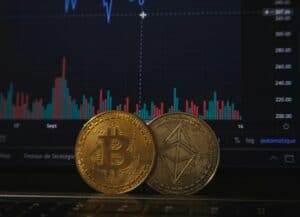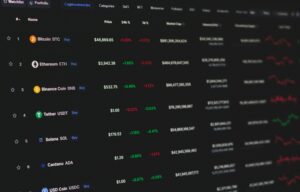US Bitcoin Reserves: A Game-Changer for Inflation in 2025?

Table of Contents
Introduction
As inflationary pressures continue to affect economies worldwide, the role of Bitcoin as a financial hedge has gained significant attention. The U.S. holding Bitcoin reserves is increasingly being discussed as a potential solution to mitigate inflation while strengthening economic resilience. This article explores how Bitcoin reserves could be a win-win strategy for the U.S. in tackling inflation and securing financial stability.
Bitcoin as a Hedge Against Inflation
Traditionally, gold has been considered the go-to hedge against inflation, but Bitcoin is now emerging as a modern alternative. With its limited supply of 21 million coins, Bitcoin operates outside central bank policies, making it an attractive asset for preserving purchasing power. Unlike fiat currencies that can be printed endlessly, Bitcoin’s scarcity gives it a deflationary characteristic, positioning it as a robust store of value.
Over the past decade, Bitcoin has outperformed traditional assets, showcasing its potential as an inflation-resistant investment. Countries facing currency depreciation have already seen a growing adoption of Bitcoin to safeguard wealth. If the U.S. were to adopt Bitcoin reserves, it could leverage this digital asset to counteract inflationary trends effectively.
Stabilizing the U.S. Economy with Bitcoin Reserves
By incorporating Bitcoin into national reserves, the U.S. government could diversify its financial holdings and reduce dependence on traditional assets like the U.S. dollar and gold. The decentralized nature of Bitcoin would provide a safeguard against market instability, offering an additional buffer in times of economic uncertainty.
Furthermore, holding Bitcoin reserves could attract institutional and global investments, strengthening the U.S. dollar’s standing in the digital economy. Countries that integrate cryptocurrencies into their financial systems position themselves as forward-thinking economies, ensuring long-term economic growth.
The Potential Risks and Challenges
While Bitcoin presents several benefits, there are also risks associated with incorporating it into national reserves. The volatility of Bitcoin remains a significant concern, as sharp price fluctuations could impact financial stability. Unlike gold, which has maintained a relatively stable value over centuries, Bitcoin’s price is influenced by market speculation and regulatory developments.
Additionally, security risks must be addressed. Cyber threats and hacking attempts pose a challenge to holding digital assets securely. The U.S. would need to implement strict security measures and regulatory frameworks to prevent potential risks associated with cryptocurrency storage and management.
Regulatory Considerations and Future Outlook
For Bitcoin to be a viable addition to U.S. reserves, clear regulatory frameworks must be established. Governments and financial institutions need to work together to create policies that support Bitcoin’s integration while ensuring security and transparency.
Recent discussions on Central Bank Digital Currencies (CBDCs) indicate that digital assets are becoming more relevant in monetary policies. If the U.S. acknowledges Bitcoin as a strategic reserve asset, it could pave the way for broader adoption and innovation in the financial sector.
Conclusion
The idea of U.S. Bitcoin reserves presents both opportunities and challenges. While Bitcoin’s potential as a hedge against inflation is promising, its volatility and regulatory concerns must be carefully addressed. However, as the global financial landscape shifts towards digital assets, integrating Bitcoin into national reserves could prove to be a progressive move for economic stability.










